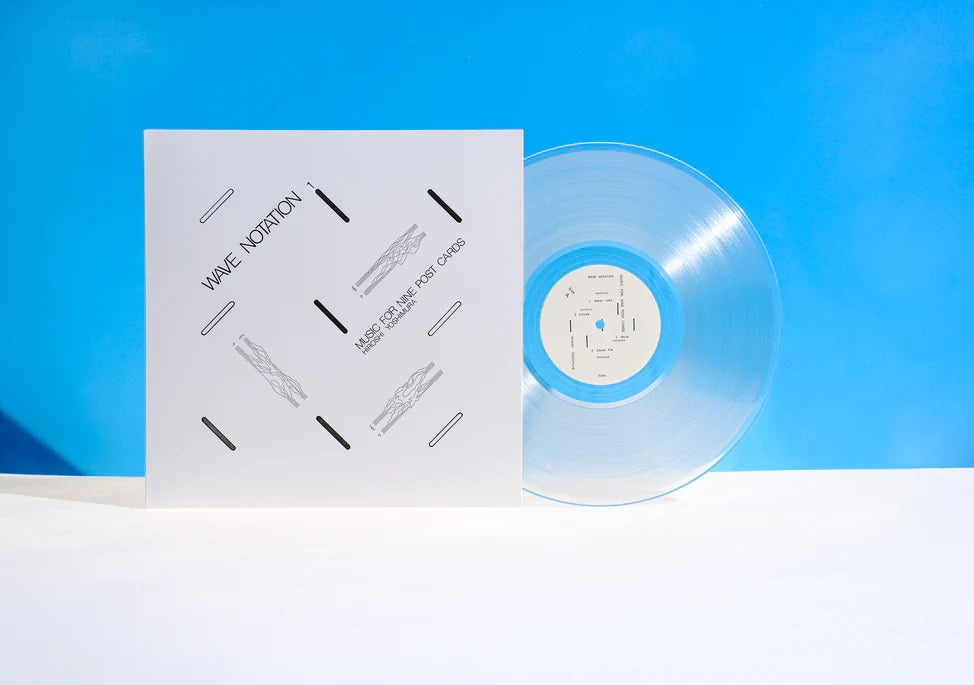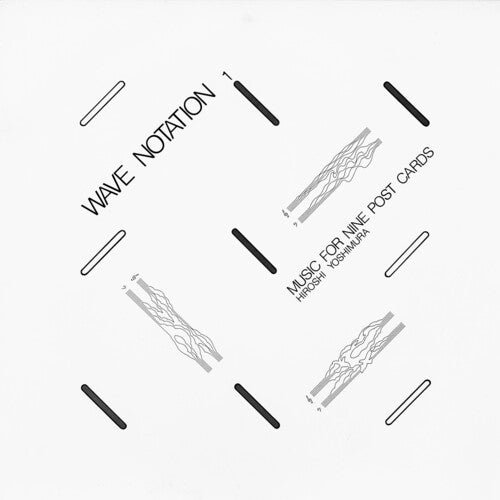Yoshimura, Hiroshi - Music for Nine Postcards (Limited Edition, Clear Vinyl)
Yoshimura, Hiroshi - Music for Nine Postcards (Limited Edition, Clear Vinyl)
Format: Vinyl LP
UPC: 826853444118
Release Date: 11/24/17
Condition: N
Out of stock
Couldn't load pickup availability
Share
- DUE TO THE QUIET NATURE OF THIS RECORDING, IF YOUR LP EXHIBITS DISTORTION UPON PLAYBACK, SIMPLY ADJUST YOUR TONE ARM TO ADD MORE WEIGHT TO THE NEEDLE!
- First vinyl and digital reissue, made in cooperation with the artist’s estate
- Remastered from original tapes
- Full reproduction of the original LP jacket
- Original liner notes by Hiroshi Yoshimura and Satoshi Ashikawa translated into English
- Clear Vinyl
Despite his status as a key figure in the history of Japanese ambient music, Hiroshi Yoshimura remains tragically underknown outside of his home country. Empire of Signs–a new imprint co-helmed by Maxwell August Croy and Spencer Doran–is proud to reissue Yoshimura’s debut, Music for Nine Post Cards, for the first time outside Japan in collaboration with Hiroshi’s widow, Yoko Yoshimura, with more reissues of Hiroshi’s works to follow in the future.
Working initially as a conceptual artist, the musical side of Yoshimura’s artistic practice came to prominence in the post-Fluxus scene of late-1970s Tokyo alongside Akio Suzuki and Takehisa Kosugi, taking many subsequent turns within Japan’s bubble economy afterward. His sound works took on many forms–commissioned fashion runway scores, soundtracking perfume, soundscapes for pre-fab houses, train station sound design–all existing not as side work but as logical extensions of his philosophy of sound. His work strived for serenity as an ideal, and this approach can be felt strongly on Music for Nine Post Cards.
Home recorded on a minimal setup of keyboard and Fender Rhodes, Music for Nine Post Cards was Yoshimura’s first concrete collection of music, initially a demo recording given to the Hara Museum of Contemporary Art to be played within the building’s architecture. This was not background music, in the prior Japanese “BGM” sense of the word, but “environmental music,” the literal translation of the Japanese term kankyō ongaku [環境音楽] given to Brian Eno’s “ambient” music when it arrived in late-70s Japan. Yoshimura, along with his musical co-traveler Satoshi Ashikawa, searched for a new dialog between sound and space: music not as an external absolute but as something that interlocks with a physical environment and shifts the listener’s experience within it. Erik Satie’s furniture music, R. Murray Schafer’s concept of the soundscape, and Eno’s ambience all greatly informed their work, but the specific form of tranquil stasis presented on releases like Nine Post Cards is still difficult to place within a specific tradition, remaining elusive and idiosyncratic despite the economy of its construction. This record offers the perfect introduction to Hiroshi’s unique and beautiful worldview: one that can be listened to–and lived in–endlessly.
SHIPPING & RETURNS
SHIPPING & RETURNS
FREE SHIPPING on purchases over $75
LOCAL PICKUP available at checkout
$5 MEDIA MAIL shipping in the USA
RETURNS
Items may be returned within 60 days of the delivery date.
If not defective, any product returned must be in the same condition in which customer received it and in the original retail packaging.
Yellow Racket will be responsible for cost of return on all damaged or defective items. Customer is responsible for cost of return if item is not damaged or defective. Photo/video evidence of damages/defects must be provided by customer within 14 days of the delivery date.
Customer assumes all responsibility for duties and taxes associated with international shipments.
GRADING
GRADING
Yellow Racket assigns condition based on the Goldmine Standard for grading records.
New (N) (Not typically included in the Goldmine Standard)
New records are purchased directly from the label, distributor, or registered wholesaler. Records are still sealed. Jackets may have slight shelf wear, but media has never been played.
Mint (M)
Still sealed. Never played. No observable flaws. Items have been purchased secondhand.
Near Mint (NM)
A Near Mint (NM) record will play perfectly, with no imperfections during playback. The record should show no obvious signs of wear.
The cover (and any additional packaging) has no creases, folds, seam splits, cut-out holes, or other noticeable defects.
Very Good Plus (VG+)
A Very Good Plus (VG+) record will show some signs that it was played and otherwise handled by a previous owner who took good care of it.
Defects should be more of a cosmetic nature, not affecting the actual playback as a whole. Record surfaces may show some signs of wear and may have slight scuffs or very light scratches.
The disc and LP cover may have slight signs of wear, and may be gently marred by spindle marks, paper scuffs, wrinkled corners, etc.
Very Good (VG)
Many of the defects found in a VG+ record will be more pronounced in a VG disc. Surface noise will be evident, but will not overpower the music. Disc may have light scratches (deep enough to feel with a fingernail) that will affect the sound.
Labels, jackets, and inserts will have visible cosmetic flaws such as wrinkles, cut-outs, slight splitting, etc. However, it will usually have less than a dozen minor flaws.
Good (G)
A record in Good condition can be played through without skipping. But it will have significant surface noise, scratches, and visible groove wear. A cover or sleeve will have seam splits, especially at the bottom or on the spine. Tape, writing, ring wear, or other defects will be present.
While the record will be playable without skipping, noticeable surface noise and "ticks" will almost certainly accompany the playback.
Poor (P), Fair (F)
The record may be cracked, badly warped, or won't play through without skipping or repeating. The picture sleeve may be water damaged, split, or heavily marred by wear and writing.




